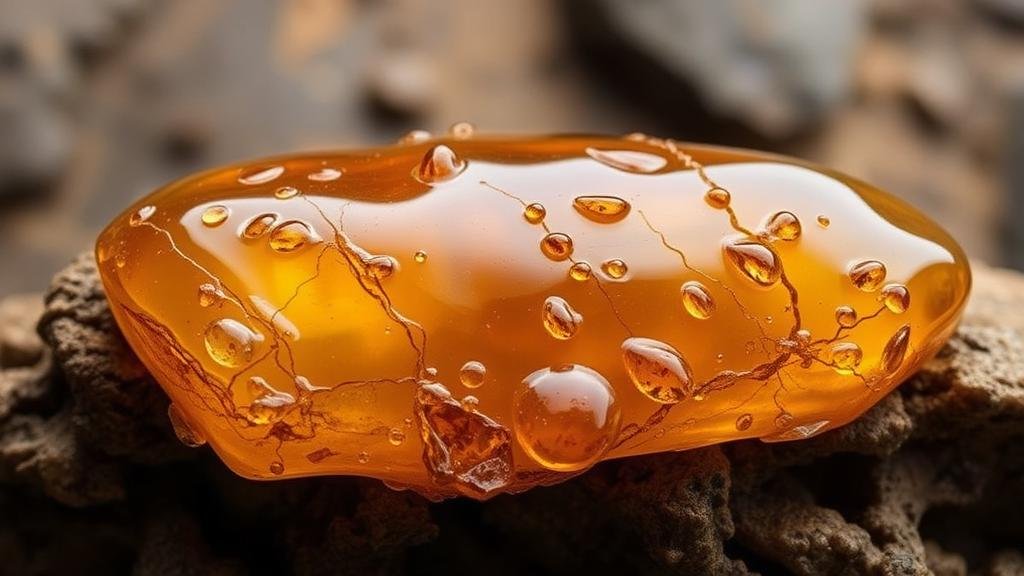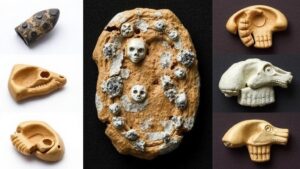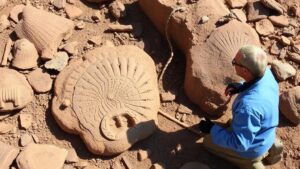Ancient Amber Artifacts: Discovering Fossils That Tell Human Stories
Ancient Amber Artifacts: Discovering Fossils That Tell Human Stories
Amber, the fossilized resin of ancient trees, holds a unique place in the world of geology and archaeology. It is not only cherished by rockhounds and mineral collectors for its beauty and rarity but also valued for its potential to unveil the stories of our planets past. This article explores the fascinating journey of amber artifacts, detailing their scientific significance, cultural impact, and practical advice for collectors.
The Science of Amber
Amber is formed from the resin secreted by trees, most commonly from coniferous species. Over millions of years, this resin undergoes polymerization–a chemical process that transforms it into a hard, amber-like substance. Interestingly, amber can range in color from vivid yellow to deep red and even blue, depending on the tree species and environmental conditions during its formation. The geology of amber-rich areas has been extensively studied, revealing important data about ancient ecosystems.
For example, the Baltic region is home to the largest deposits of amber, estimated to date back to the Eocene Epoch, around 44 million years ago. e deposits may contain inclusions–small organisms trapped in the resin–that provide invaluable insights into prehistoric life. Fossils found in amber can include:
- Insects (e.g., mosquitoes, ants)
- Plant material (e.g., leaves, pollen)
- Small vertebrates (e.g., frogs, lizards)
Cultural Significance of Amber
Throughout history, amber has been regarded as more than just a natural jewel. Ancient cultures revered it for its beauty and supposed mystical properties. For example, the Greeks referred to amber as Elektron, from which the term electricity is derived, due to its ability to generate static when rubbed. In prehistoric societies, amber artifacts were utilized as amulets and jewelry with cultural and spiritual significance.
More recently, amber has been an important artifact in archaeological finds, revealing information about trade routes and interactions between ancient civilizations. For example, amber trade routes connected the Baltic region to the Mediterranean, leading to significant findings in places like Ancient Rome, where artisans crafted intricate jewelry from amber sourced over long distances.
Collecting Amber: Practical Tips for Enthusiasts
For rockhounds and mineral collectors looking to add amber to their collection, there are several key considerations to keep in mind. Understanding the characteristics of authentic amber is vital for making informed purchases.
Identifying Authentic Amber
Identifying genuine amber can be challenging, as numerous synthetics and imitations exist on the market. Here are some methods to help determine authenticity:
- Visual Inspection: Real amber often has bubbles or imperfections, while synthetic versions tend to be flawless.
- Water Test: Authentic amber is less dense than water and will float when placed in a glass of saltwater.
- Ultraviolet Light: Under UV light, genuine amber typically fluoresces blue, while most imitations do not.
Where to Find Amber
Collectors can search for amber in a variety of locations, depending on the geological setting. Some notable locations include:
- Baltic Sea Region: Considered the Amber Coast, this area is famous for abundant amber washes along the shores.
- Dominican Republic: Known for producing amber that often contains rare inclusions, including significant fossilized specimens.
- Mexico: Particularly Chiapas, where amber mines have been in operation for centuries.
Preservation and Display
Once youve acquired amber specimens, preserving their integrity is crucial. Here are a few tips for preserving and displaying your collection:
- Avoid Direct Sunlight: Extended exposure to sunlight can cause amber to fade and lose its luster.
- Humidity Control: Keep amber in a stable environment, avoiding excessively dry or humid conditions.
- Safe Handling: When displaying, use soft cloths to avoid scratches while handling your pieces.
Conclusion: The Stories Within Amber
Ancient amber artifacts offer a direct link to our planets history, encapsulating tales of bygone eras and the life forms that existed within ancient ecosystems. As rockhounds and mineral collectors explore this stunning fossilized resin, they not only acquire beautiful specimens but also participate in the ongoing narrative of Earths geological and cultural heritage. By understanding how to identify, source, and care for amber, enthusiasts can enjoy a fulfilling and insightful collecting experience.



